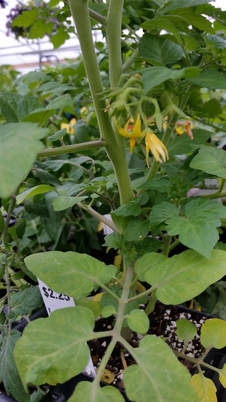 We are all guilty. We buy our plants and immediately take them home and plant them. This is harsh treatment for tender seedlings who have been coddled in the greenhouse. Take an intermediate step and be rewarded with healthier plants. Transplanting from indoors to outdoors can cause a plant to go into shock. Consider the greenhouse: steady temperatures, little to no wind, controlled watering, and filtered sunlight. Our gardens offer none of this. While the plant is dealing with the harsher outdoor conditions it can be a victim of environmental damage, diseases and pests. And while dealing with these conditions, it will not be growing much. Take the time to condition the plants for their new home by hardening them off. According to Eileen Nelson, UW-Extension Herbaceous Ornamental Specialist:
Hardening-off is the process of gradually moving tender seedlings from their protected environment to an outdoor setting. It is done in stages so the impact of strong sunlight, cool nights and less frequent watering doesn’t shock their system. Use the following steps as a guideline. 1.On a mild day (temperatures above 40 F), set your plants in a sheltered location with 1-2 hours of sunshine. 2.Each day increase exposure to sunlight a few additional hours at a time, keeping them out of harsh winds and cold rains in early stages. 3.As they strengthen they will also be ready to withstand stronger breezes and cooler rains. 4.Gradually reduce the frequency of watering, but don’t allow the seedlings to wilt. 5.If temperatures below the crops’ minimum are forecast, bring the plants indoors or cover them to protect them from damage. 6.After transplanting to the garden, use a weak fertilizer to get them growing again and help avoid transplant shock. 7.Utilizing a cold frame can minimize moving plants indoors, but, the guidelines for gradual increases in sunshine, exposure to temperatures and wind should still be followed. An alternative method is to plant the tender seedlings directly in the garden and use some form of protection such as bottomless milk jugs or buckets to put around the transplant. There are a number of commercial products that accomplish the same protection. There is a potential to gain 7 to 10 days of growth, but beware it is at the risk of the plant going into transplant shock and being susceptible to disease and pests. Hardening off reduces the growth rate, thickens the stem and leaves that allows the plant to withstand the harsher outdoor conditions. It will trigger a more rapid root development than in non-hardened plants and lead to a healthier plant that will produce more for the gardener. Good quality transplants are stocky. They have a healthy appearance, medium size (not too leggy), deep green color, and freedom from disease and pests. Planting Notes: Zone 3b-4b Average last Spring frost, May 24-30 Average Fall killing frost, September 13-19 Growing Season Days, about 110 days
0 Comments
Leave a Reply. |
|
| North Country MGV | gARDEN bLOGS |
Location |
|
 RSS Feed
RSS Feed